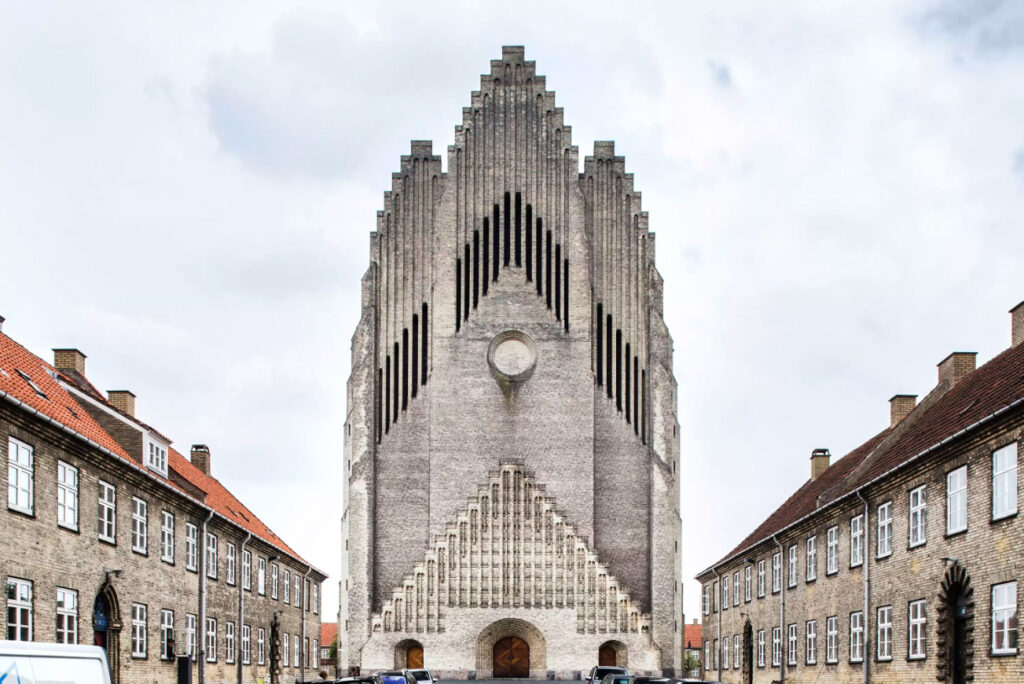
As an admirer of Expressionist architecture, I have always wanted to see Grundtvig’s Church in Copenhagen, the church built entirely of brick, adhering to craft tradition. Today I visited this monument, one of the rare examples of this brief movement which introduced the notion that architecture is a form of art and spirituality while promoting the use of bricks and glass in the most sculptural way. While it was primarily centered in Germany and the Netherlands, Grundtvig’s is the only Danish example designed by father-son starchitects Peder-Vilhelm Jensen-Klint and Kaare Klint in the Expressionist way during the interwar years. In fact, the senior Klint won this commission through a competition in 1913, but construction did not start until after WWI and took five years to complete. It was inaugurated in 1927 and then took another decade to fully complete the spectacular interior which, after his death, was completed by his son, Kaare Klint, who rose to become Denmark’s stararchitect, also known as the father of Danish Modern Design. Klint started his career as an artist and became increasingly interested in architecture. A shining, almost miraculous moment in the history of architecture was when he was admitted to the Architects’ Association of Denmark in spite of his lack of formal training.
Like many other monuments of Expressionism, such as the Great Theater in Berlin, by Hans Poelzig, Frundtvig’s came to service the working class, standing at the center of a housing project. Communal concepts and democracy stood at the core of the Movement along with its artistic goals. The design merged traditional Danish architecture and local materials with the avant-garde forms and patterns of brick Expressionism while staying loyal to the verticality of Gothic architecture. Unlike other Expressionist architects who used bricks, such as Peter Behrens, here all bricks—around 5 million of them in all—are yellow, as in traditional Danish architecture. While the façade is imposing and magnificent with its tower and magnificent door, the interior shines even more brightly. The bricks were laid in accordance with the vocabulary of Expressionism, and the art of the bricks completely substitutes for the typical ornamentation, resulting in quiet abstraction and meeting the goal of the Movement which opposes the machine age as the foundation of artistic creation and to utility and economics. Grundtvig’s Church came to reflect the heritage of Expressionism in solving problems of the world through symbolic architecture, as architects felt that they had to act on behalf of society and sought to bring happiness and spirituality to people through artistic architecture. Its cosmic scale came to achieve these goals, and through its artistic program, it came to propose transformation.
I always encourage my students to travel, to go out there, to reach the end of the world and experience architecture, because you can read all the books in the world and look at millions of photographs but none can adequately substitute for the lived experience. Architecture is transformative, and many people today care more about design and architecture than they ever did. Grundtvig’s is excellent architecture because it makes you feel, it makes your heart stop. The silence and abstraction move us, like standing in front of a painting by Mark Rothko which exuded emotions, because this architecture came to express basic human emotions—happiness, tragedy, sadness—and this is why many people break down and cry when they are in the presence of this spiritual architecture. I want to thank Sandra Septimius and Peter Kjelgaard from Brunn Rasmussen for taking me to this out-of-the-way building and allowing me that Danish experience.
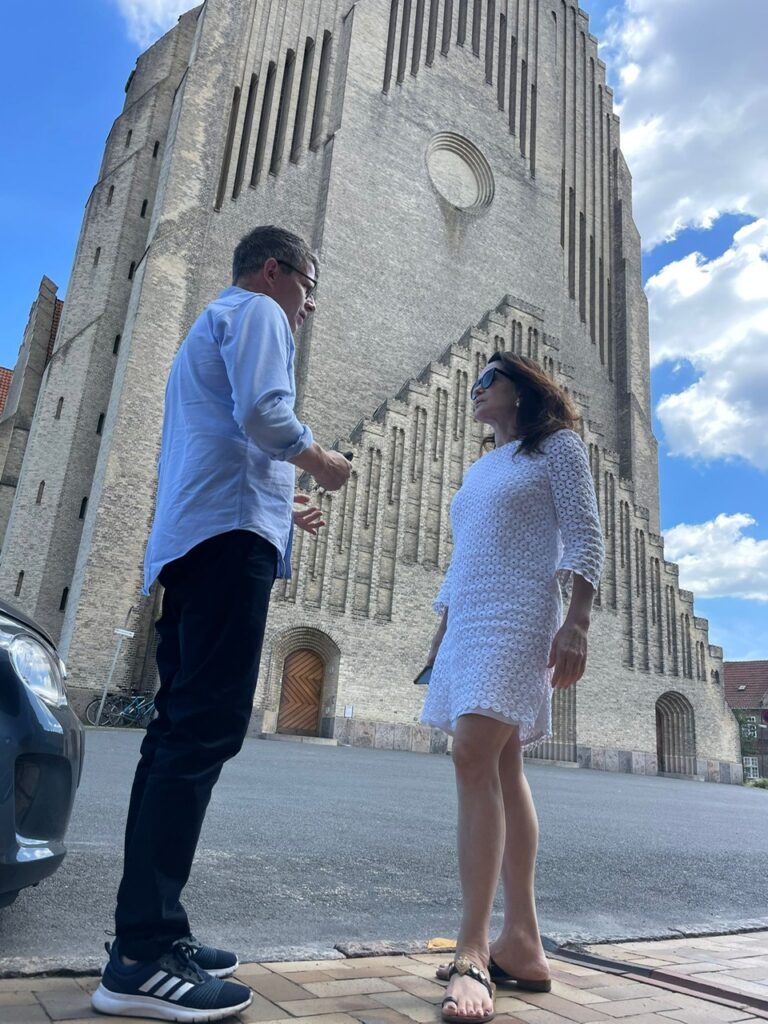
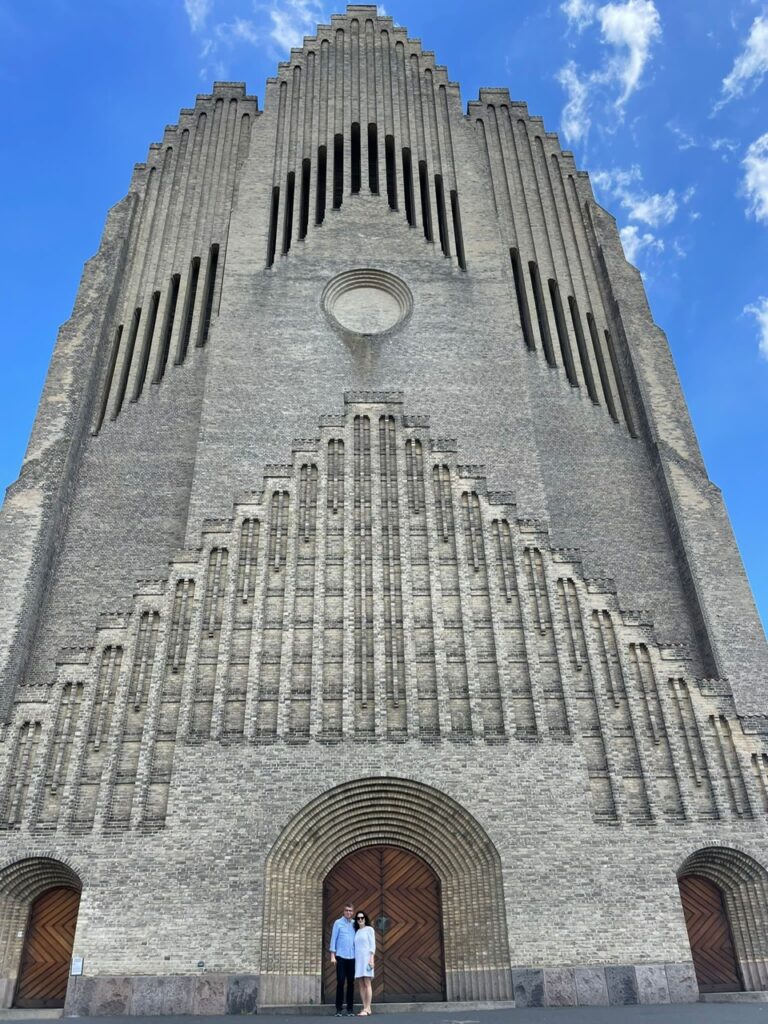
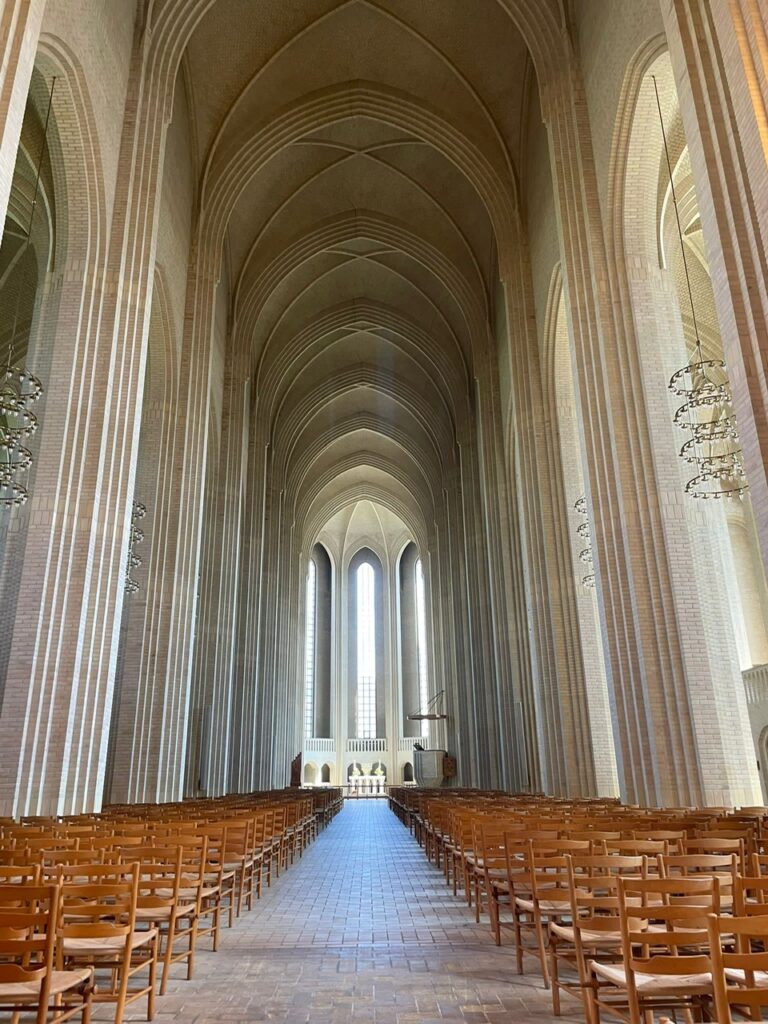
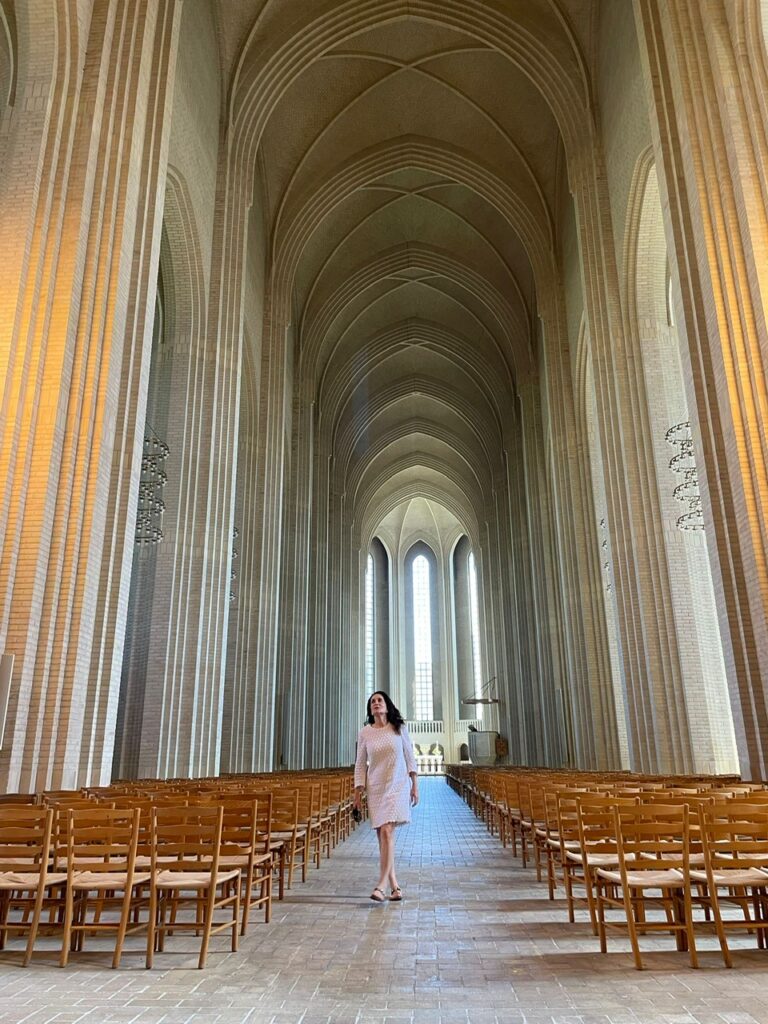


Hello Daniella.
This is Judi Wolf. You may recall that I had been in touch with you regarding your trip to Japan that my partner Alden and I would like to join. next year.
Interestingly, we are here in Copenhagen at the same time as we arrived yesterday, 30 June. Thank you for sending on all this great info. We will head to some of these great destinations tomorrow!